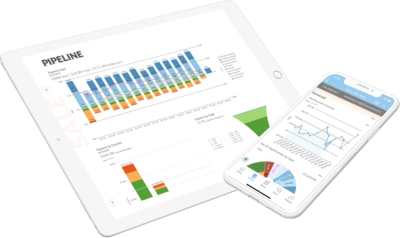Tips to enhance Excel file security in the cloud using BI tools
Sharing data files has become an effective way for companies to communicate large amounts of information quickly. However, this convenience comes at a cost. Namely, the risk that a sensitive document might find its way into the wrong hands.
There have been many high-profile cases of data breaches in recent years, and often these have involved the theft or leak of an Excel spreadsheet. When data is readily available in an easily-shared format like this, it’s important to take extra steps to protect it.
One way to do this is by using cloud-based business intelligence (BI) tools. BI tools offer a number of advantages when it comes to securing data, including the ability to:
- Restrict access to specific individuals or groups
- Control who can view or edit data
- Track changes and activity logs
- Enforce two-factor authentication
By storing your sensitive data in a secure BI platform, you can be confident that only authorized users will be able to access it. And if any unauthorized activity does occur, you’ll be able to quickly identify and investigate the source.
But how can you start utilizing these features to enhance your Excel file security? Let’s take a look at some tips (and bust some myths) about data security.
The risks of freely sharing data
Data has become the currency of modern business. Companies are gathering more and more information about their customers, operations, and finances.
As data is collected and leveraged, it has to be stored in practical formats that can be analyzed and shared with others. Traditional methods include storing data in a traditional relational database or on the file system of a local computer.
Excel has become increasingly popular as an option for storing data, due to its flexibility and ease of use. For small amounts of data, it can be an effective way to save and share information.
However, when large amounts of data are involved—particularly sensitive data—using Excel can create security risks.
There have been many high-profile cases of data breaches where an Excel spreadsheet was the source of the leak. From mismanaged user permissions to security flaws in the software itself, there are a number of ways that data stored in Excel can find its way into the wrong hands.
Not to mention, efforts to increase operational efficiency have made it easier than ever to riskily share data. Emailing an Excel file to another person or downloading it from a shared drive doesn’t take much effort—and the recipient might not have the same security precautions in place.
Data stored in Excel can be particularly vulnerable to accidental leaks and malicious attacks. But what makes Excel such a risk? Let’s take a look at some of the specific dangers:
User error
One of the most common ways that data breaches occur is through user error. If an unauthorized person gains access to an Excel file, they could download it, email it to themselves, or simply copy and paste the data into a new document.
Even if users are careful with their files, mistakes can happen. For example, if a file is accidentally sent to the wrong person, or uploaded to a public drive, it could be exposed to anyone.

Security flaws
Another risk of using Excel is that the software itself has a number of security flaws. These have been exploited in the past by malicious attackers, leading to data breaches.
For example, a flaw was discovered in Microsoft Office that allowed attackers to remotely execute code on a victim’s computer. This flaw could be exploited just by opening a malicious Excel file—no user interaction required.
There are also a number of ways to bypass password protection in Excel, making it possible for unauthorized users to access data even if it’s supposed to be secure.
Insider threats
Not all breaches occur externally. In fact, internal threats are far more common—particularly in companies with large amounts of sensitive data and a lack of strict security protocol.
In the Healthcare industry alone, research has shown that insider attacks occur by employees stealing data for use outside the company. These can range from low-level employees copying personal health information to sell on the black market, to high-profile executives abusing their access rights by selling customer records or credit card details.
A number of these insider incidents have involved Excel files being shared inappropriately—either through insecure file share connections at work or through email attachments sent to an unauthorized individual’s personal address.
How BI can increase Excel file security
Using a business intelligence (BI) tool can help mitigate some of the risks associated with using Excel for storing data.
A BI platform provides a secure, centralized repository for storing and sharing data. This means that instead of emailing an Excel file around or uploading it to a shared drive, users can securely access the data they need through the BI tool.
Once you begin to upload and share Excel documents via your BI platform, you will be able to enforce file permissions and access rights. This means that only specific individuals can view or edit reports, or even individual rows of data.
This makes it much harder for those with malicious intentions—or simple mistakes—to get access to your sensitive data.
The benefits of using BI tools to enhance security
Restrict access to specific individuals or groups
By using BI tools, you can control who has access to your data. This is done by assigning user permissions at the report or row-level.
For example, you could allow all employees to view a sales report, but only allow managers to view the detailed customer information. Or, you could give a team of analysts access to raw data, but restrict their ability to change it.
This level of granular control over who can see and edit data makes it much harder for unauthorized individuals to gain access to sensitive information.
Enforce security protocols
With BI tools, you can also enforce other security protocols—such as requiring users to log in with two-factor authentication or setting inactivity timeouts.
This further increases the security of your data, as it makes it harder for attackers to gain access even if they have stolen a user’s credentials.
Track user activity
BI tools also provide a method of tracking and auditing user activity. This means that you can see who has accessed or edited a report, and when they did it.
This information can be used to quickly identify any unauthorized access, and take steps to mitigate the risk.
Enforce two-factor authentication
As an added security measure, you can require users to log in with two-factor authentication. This means that even if someone has stolen a user’s credentials, they will not be able to access the data without also having possession of the user’s phone or another second factor.

Common myths about BI tools and file security
While the benefits of using BI for increased operational security are evident, many companies still hesitate to make the switch from Excel. This is often due to common myths and misconceptions about BI tools.
Some of the most common myths about BI tools and file security include:
- Myth 1: BI tools are too expensive
- Myth 2: BI tools are difficult to use
- Myth 3: Only large companies need BI tools
Each of these myths is addressed below.
BI tools are too expensive
One of the most common misconceptions about business intelligence tools is that they are too expensive for small or medium-sized businesses.
However, this is simply not the case. There are a number of BI platforms on the market that are specifically designed for small businesses–and many of them are available at a fraction of the cost of enterprise-level platforms.
Additionally, many BI tools offer free trials or freemium plans that allow you to try out the platform before committing to a purchase. This is a great way to test out various BI solutions and see which works best for your business.
BI tools are difficult to use
Another common myth about BI tools is that they are difficult to use, especially for non-technical users.
While it is true that a lot of complex data analysis can be performed using advanced features in these platforms—any user can begin leveraging basic reporting functions with little training or technical knowledge.
Most BI platforms on the market today are designed to be user-friendly and easy to use, with features that can be leveraged by users of all skill levels.
Additionally, many BI vendors offer training and support services to help users get the most out of their platform.
Only large companies need BI tools
This myth is firmly rooted in the belief that business intelligence tools are only used for complex data analysis—and therefore only needed by large companies with extensive data sets.
However, this could not be further from the truth. While BI tools can certainly be used for complex data analysis—their primary purpose is to provide insights that can improve business performance.
This means that businesses of all sizes can benefit from using BI tools, even if they only have a small amount of data to work with.
Share data safely with BI
As you can see, the benefits of using BI tools for file security are numerous.
By taking advantage of these solutions, businesses can improve their protection against data breaches and other risks associated with sharing sensitive information.
With that, many platforms offer free trials or freemium plans that allow you to try before you buy—meaning that there has never been an easier time to start leveraging business intelligence for increased operational security.
So why wait? Start exploring your options today and see how BI can help you keep your data safe.
Check out some related resources:

The 11 Best Big Data Analytics Tools in 2025

Cloud Data Warehouse Usage Surges 116% as Industries Race to the Cloud






